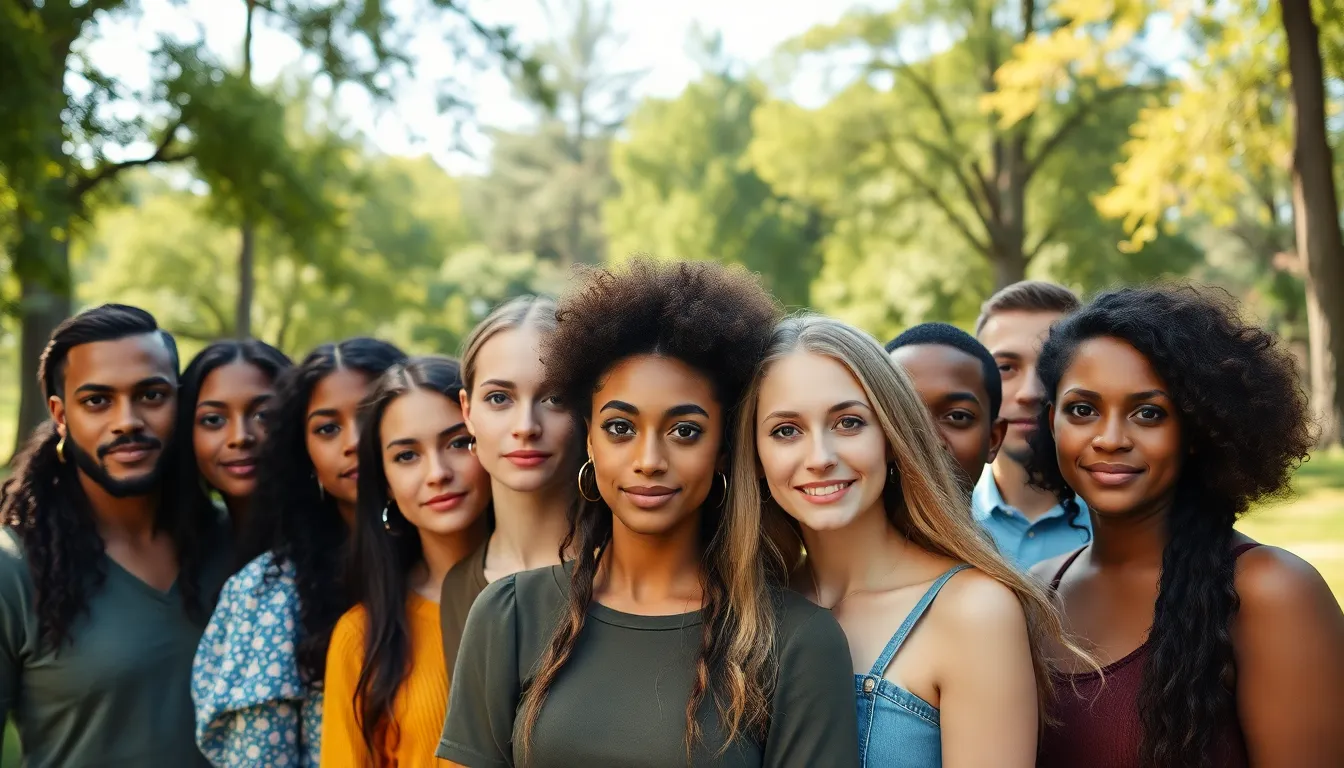Brown eyes might seem common, but they’ve got a secret: they’re actually a rarity in the grand scheme of eye colors. While blue and green eyes often steal the spotlight in movies and magazines, brown-eyed folks are quietly winning the genetic lottery. With a rich history and a fascinating genetic twist, brown eyes deserve a moment in the sun—or at least a spotlight on the stage of eye color!
Table of Contents
ToggleUnderstanding Eye Color Variability
Eye color varies widely among individuals, with brown eyes being a significant aspect of that diversity. In fact, genetic variations play a crucial role in determining these colors.
The Science Behind Eye Color
Eye color arises mainly from the presence of melanin in the iris. Higher melanin levels typically result in brown eyes, while lower levels lead to blue or green hues. Various structural factors within the eyes also affect perceived color. Research indicates that over 70% of the global population has brown eyes, showcasing their widespread nature. Genetic traits and light scattering further influence how one perceives eye color.
Genetic Factors Influencing Eye Color
Genetics governs most eye color variations, with multiple genes involved. The OCA2 and HERC2 genes significantly impact melanin production. Brown eyes often occur from dominant inheritance patterns, while blue and green eyes stem from recessive genes. Identifying specific genetic markers may provide insights into familial connections. Additionally, environmental factors like lighting can subtly alter perceptions of brown eye variability.
Global Distribution of Eye Colors

Brown eyes dominate the global landscape, showcasing a significant share of the eye color spectrum. Eye color varies greatly across different regions, influenced by genetic and environmental factors.
Prevalence of Brown Eyes Worldwide
Over 70% of the global population possesses brown eyes. This prevalence is particularly pronounced in Asia and Africa, where melanin-rich individuals are common. In many Latin American countries, brown is the most represented eye color, highlighting its widespread nature. Regions in Europe also display brown eyes but tend to include a greater variety of colors. This genetic trait has been influenced by evolution, with adaptability playing a key role in brown eye dominance across diverse environments.
Comparison with Other Eye Colors
Brown eyes surpass other colors in abundance. In contrast, blue eyes account for merely 8% of the population. Green eyes are even rarer, with approximately 2% of individuals exhibiting this eye color. Gray and amber eyes represent less than 1% collectively. These statistics underline the rarity of blue and green compared to the commonality of brown eyes. Genetic variation influences these differences, with brown eyes often resulting from higher melanin levels, while lighter colors emerge from reduced melanin.
Cultural Associations with Eye Color
Brown eyes carry significant cultural meanings across various societies. Many cultures view them as symbols of warmth, reliability, and safety. In contrast, some traditions associate brown-eyed individuals with mystery or depth due to the enchanting appearance of darker irises.
Symbolism of Brown Eyes in Different Cultures
Many African cultures celebrate brown eyes for their connection to earthiness and strength. In Asian cultures, brown eyes often signify loyalty and trustworthiness, making them cherished traits in personal relationships. Native American stories frequently reference brown eyes as introspective and wise, evoking a sense of connection to nature.
Perceptions and Stereotypes
Cultural perceptions shape the stereotypes surrounding brown-eyed individuals. In many societies, brown eyes create an impression of approachability and friendliness. Conversely, some stereotypes suggest that dark-eyed people might be overly serious or intense. These views frequently depend on individual experiences and societal narratives rather than objective truths. Despite stereotypes, brown-eyed individuals proudly represent a genetic heritage cherished for its beauty and diversity.
Statistics on Brown Eye Rarity
Brown eyes represent a significant portion of the global population, making up over 70%. This high prevalence showcases their dominance in various demographics around the world.
Demographics of Brown-Eyed Individuals
Regions like Asia and Africa exhibit a high concentration of brown-eyed individuals, largely due to genetic factors and evolutionary adaptations. More than 90% of Asian individuals possess brown eyes, highlighting its overwhelming prevalence. In Latin America, brown eyes dominate the landscape, with over 80% of the population exhibiting this eye color. By comparison, Europe reflects a more diverse mix of eye colors, but brown eyes still account for approximately 50% of individuals there.
Factors Affecting Eye Color Variation
Genetics primarily influence eye color, with the OCA2 and HERC2 genes playing significant roles. Higher levels of melanin in the iris correlate directly with brown eyes, resulting in their widespread nature. Environmental factors can lead to variability, impacting perceived eye color shades. Additionally, sunlight exposure can increase melanin production, potentially affecting eye color over time. Cultural perceptions also contribute to how brown eyes are viewed, and these contextual elements further shape the understanding of eye color diversity.
Brown eyes may be widespread but their uniqueness often goes unnoticed. They embody a rich tapestry of genetic diversity that deserves appreciation. With their deep cultural significance and varying perceptions across societies, brown eyes symbolize warmth and reliability.
The evolutionary advantages linked to higher melanin levels have made brown eyes the most common globally. Yet this commonality doesn’t diminish their beauty or the stories they tell. Celebrating brown eyes allows for a greater understanding of the complex interplay between genetics and culture, enriching the narrative of human diversity.




